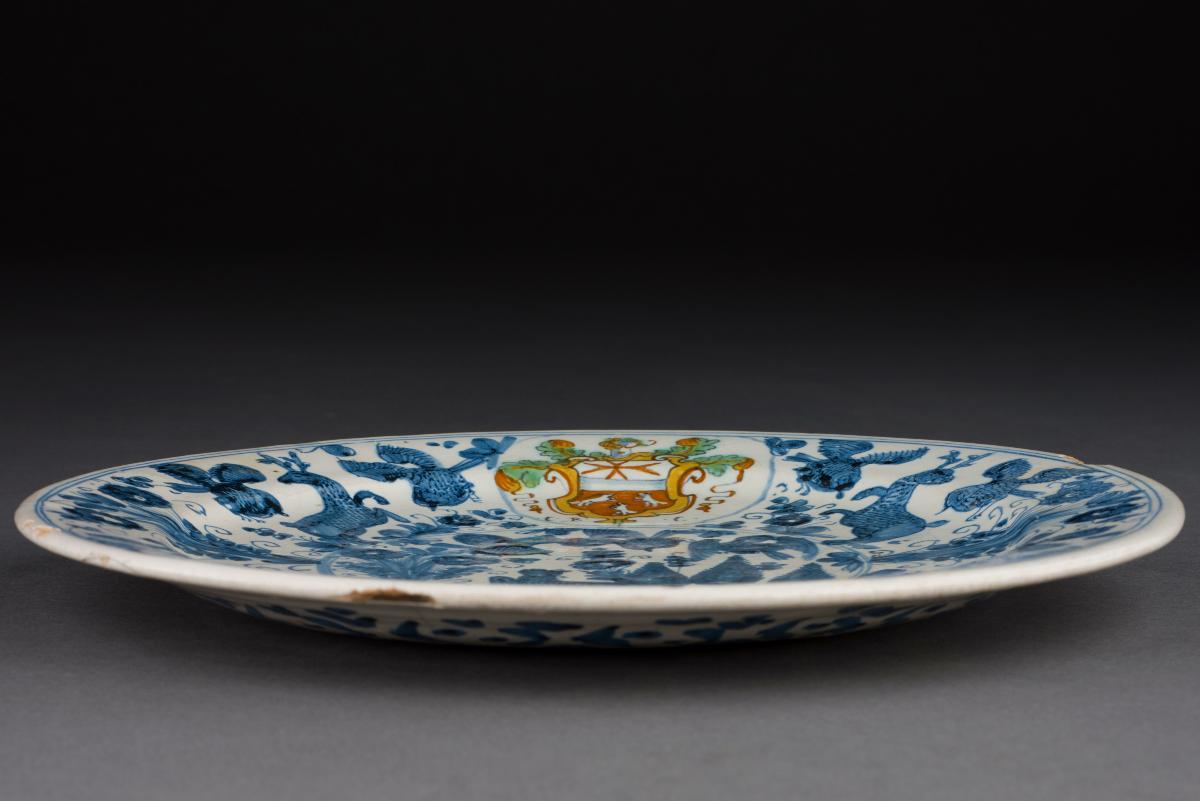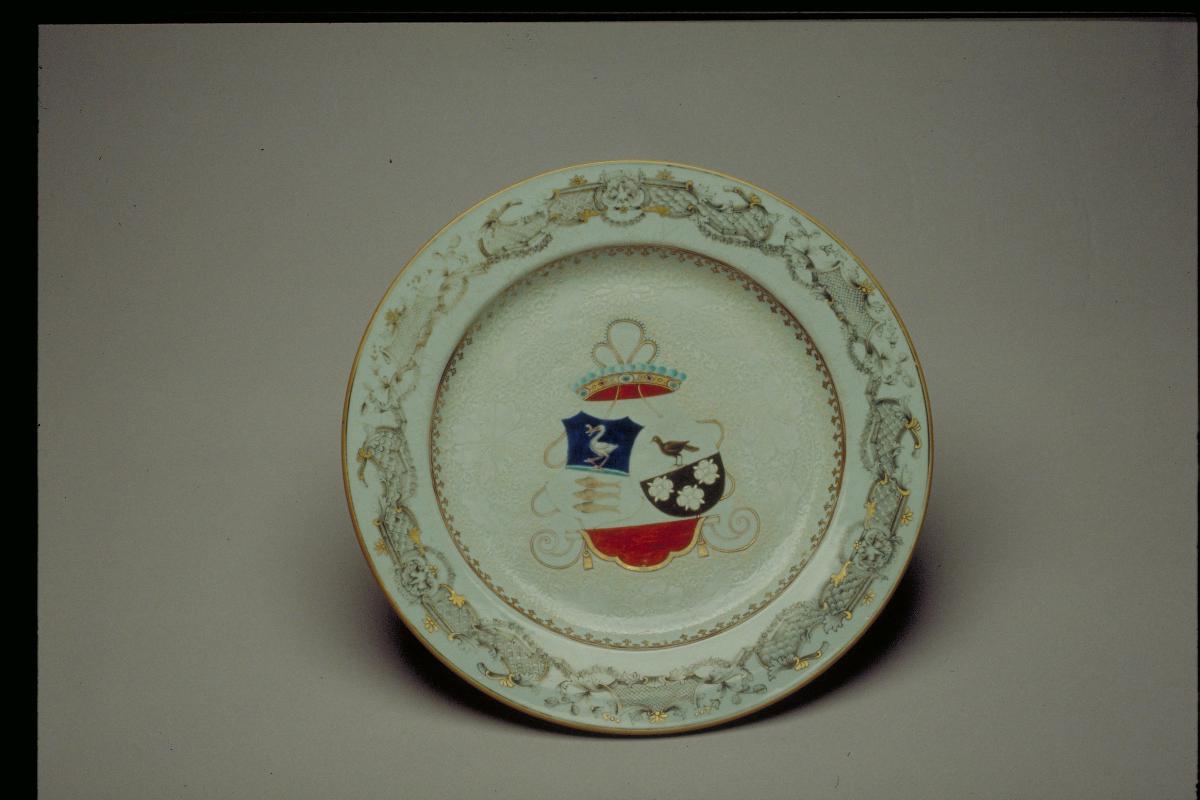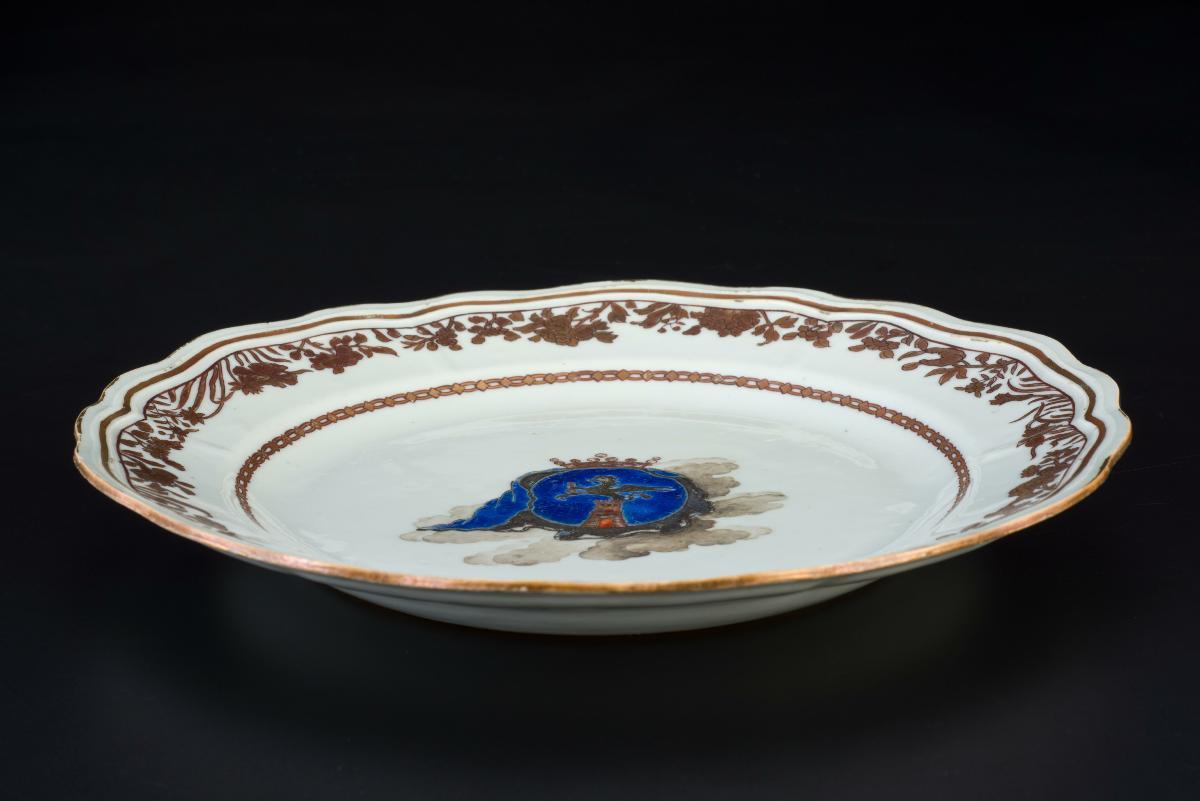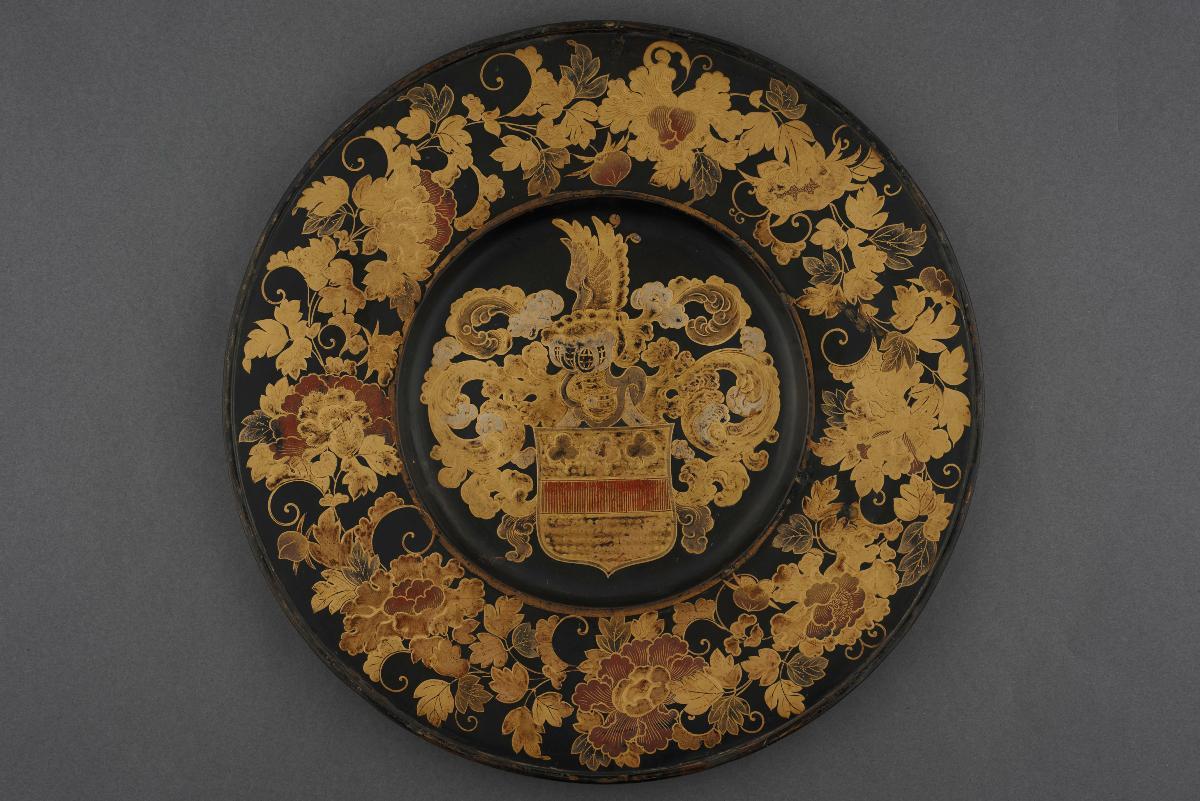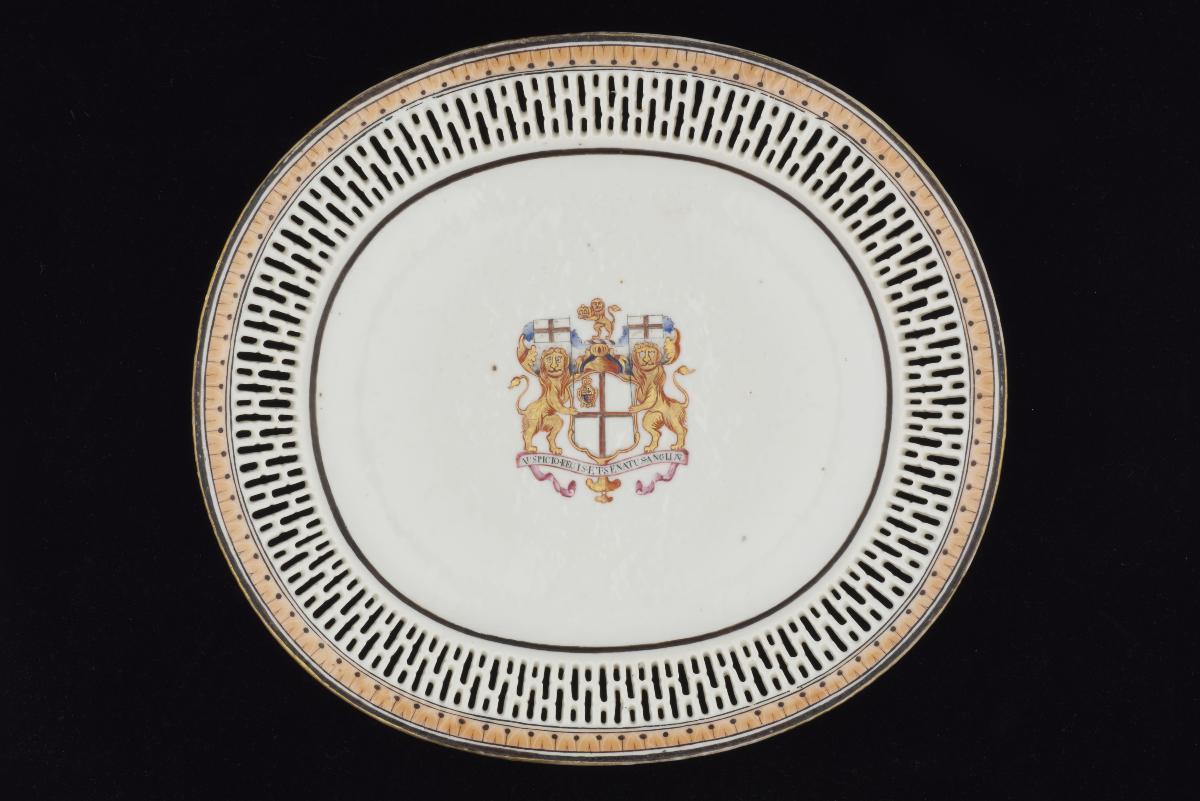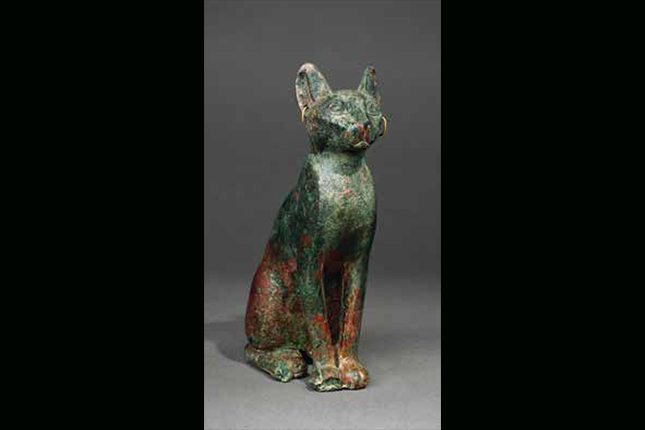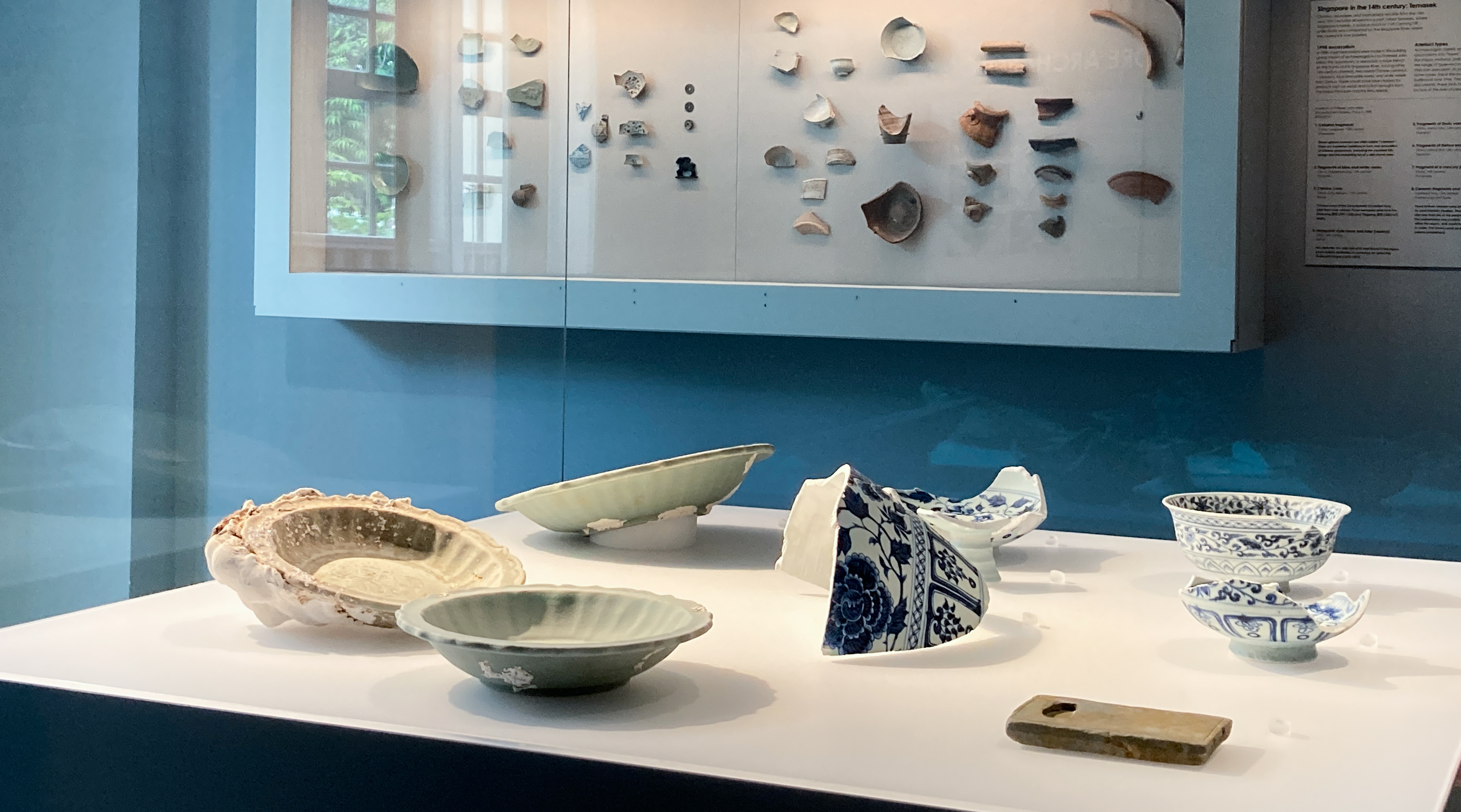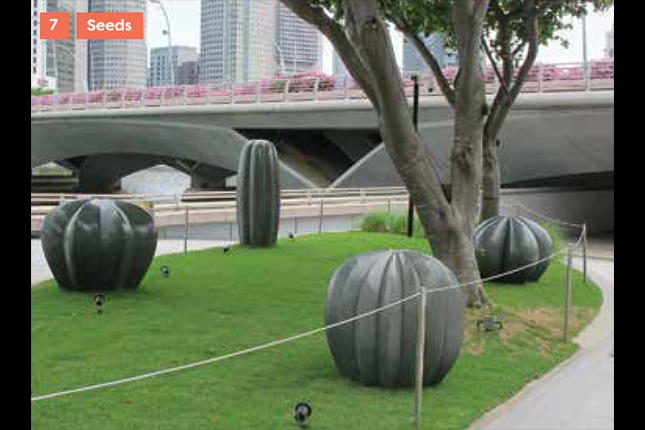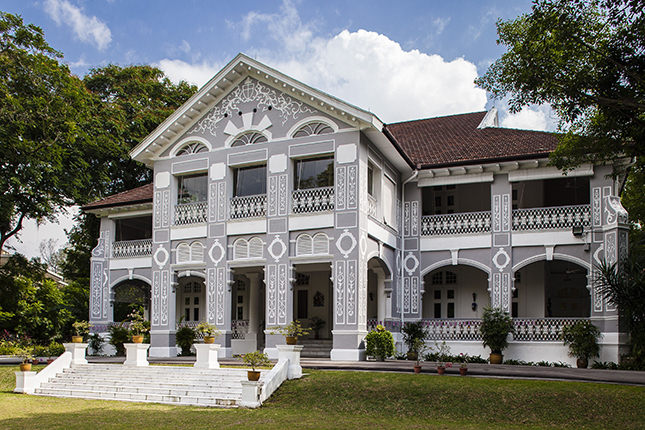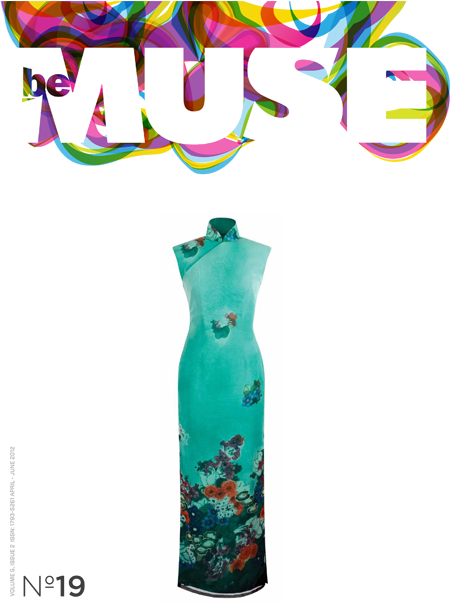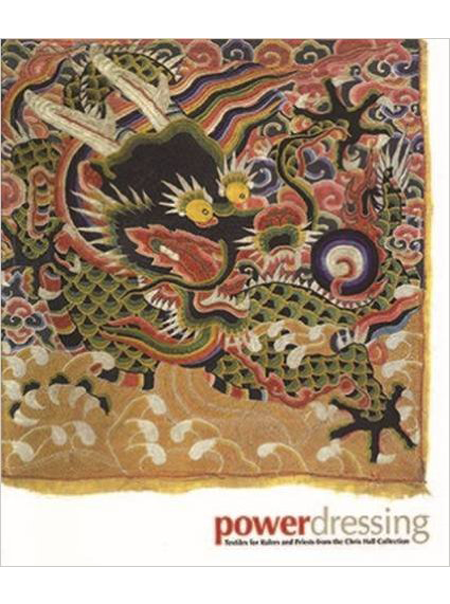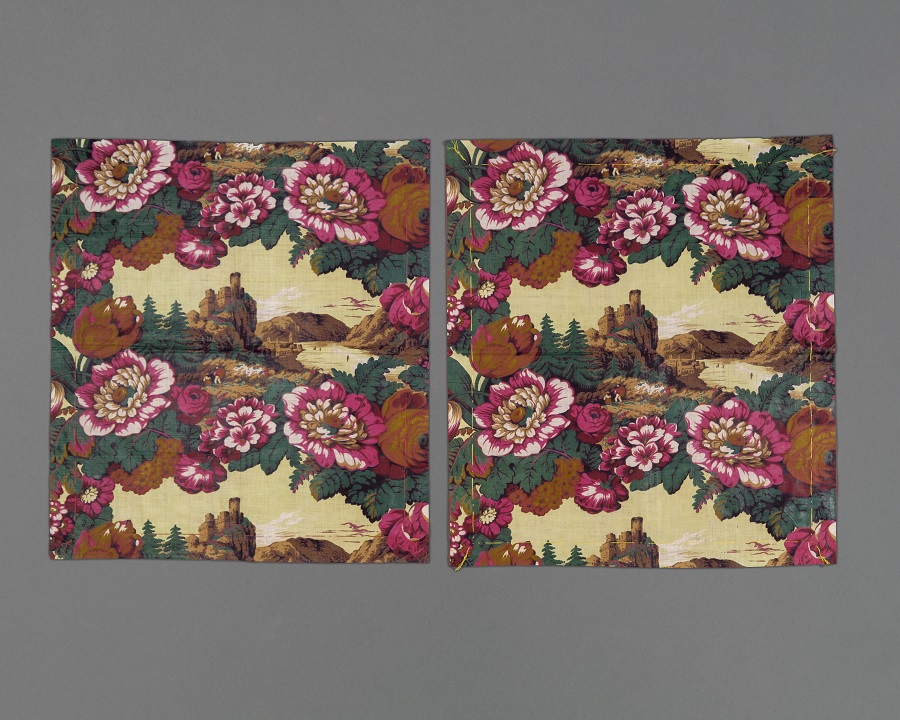Chinese blue and white porcelain also inspired Italian ceramics. This 'maiolica' (the Italian term for tin-glazed earthenware) dish has deer, birds and foliage painted in a spontaneous style reminiscent of Kraak wares. A part of the design along the rim, has been intentionally left blank so that it could be personalised at the instruction of its owner. This dish has a coat of arms added in colours. The coat of arms suggests that the original owner of the dish was probably a Knight of St. John of Malta.Small quantities of Chinese porcelain first found their way to Europe in the 14th century. The Portuguese were the first Europeans to establish a trading base in Macau (1557) where they traded in Chinese porcelain. Vast quantities of wares were exported to Europe during the 17th century, with the entry of the Dutch, then English and other European trading companies. Cargoes bound for Europe at this time, mainly comprised blue and white porcelain. One of the most popular types were Kraak porcelain.Kraak porcelain has a thinly potted body and decoration in panels painted in a lively style. The term ‘Kraak’ was probably derived from the word ‘carrack’ referring to a type of Portuguese ship that brought porcelain to Europe. It could also be derived from the Dutch word ‘kraken’ which means ‘the ability to break easily’ or the term for a style of shelves used for porcelain display in Dutch homes.




